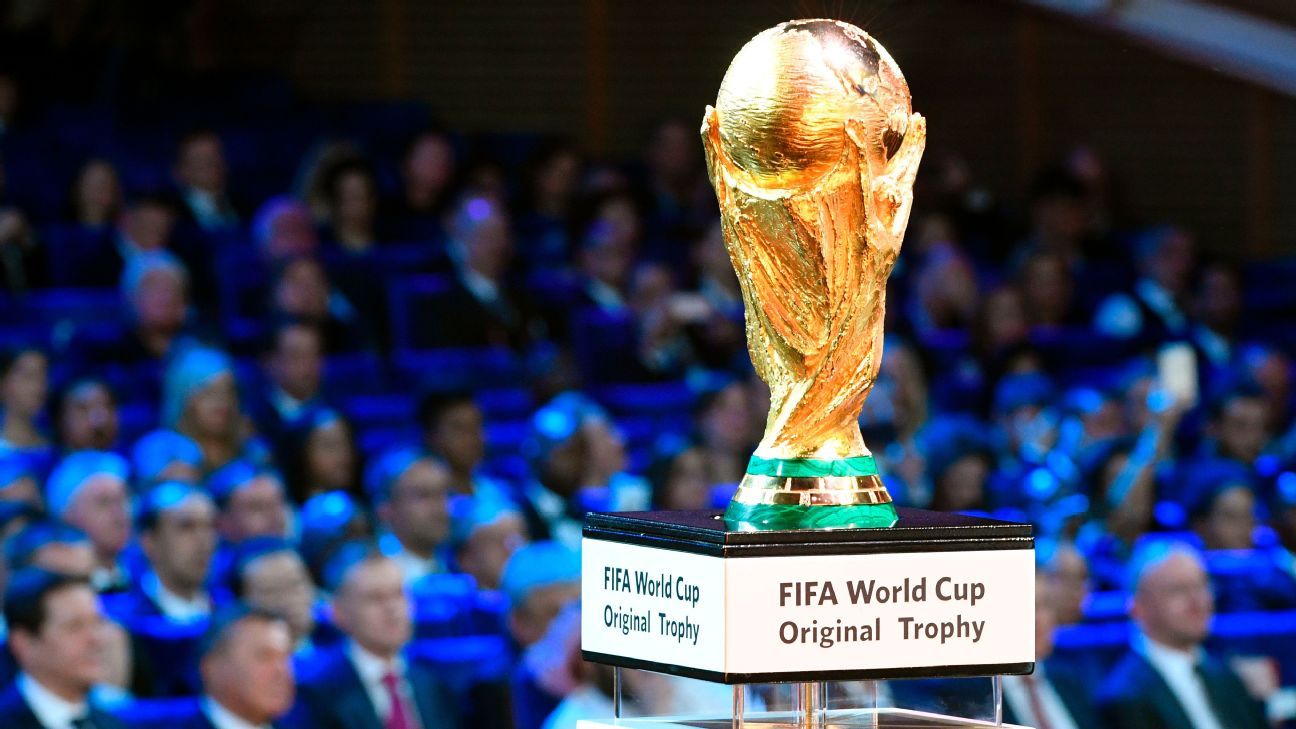


The next World Cup is four years away, but if the tournament began today, how would the biggest countries line up? Further, what do they need to do between now and kickoff on Nov. 21, 2022? We asked our writers to look into the future.

Argentina
Starting XI if the World Cup began today
Sergio Romero; Renzo Saravia, Juan Foyth, Nicolas Otamendi, Nicolas Tagliafico; Giovani Lo Celso, Leandro Paredes, Exequiel Palacios; Lionel Messi, Paulo Dybala, Mauro Icardi.
The early exit in Russia meant Argentina finally started to clean house. Messi’s international future is the big question mark; apart from him, few veterans have a realistic chance of making the 2002 team.
Next Gen
Fans still do not understand why Giovani Lo Celso, 22, did not play a single minute in Russia and the on-loan Paris Saint-Germain midfielder has since impressed at Real Betis.
Juan Foyth looks promising in defence, a department where Argentina need new talent. Only 20, he stands 1.90m tall and has good feet, having started as a midfielder with Estudiantes de La Plata. He will only get better under Mauricio Pochettino at Tottenham.
Expectations
Unless miracles happen, individual talent is not enough. Argentina continues to produce great players, but building team spirit and identity will take time. Improving on the round-of-16 exit in Russia is a realistic goal for Qatar.
Any issues?
Who will replace Jorge Sampaoli? We still do not know. His former assistant Lionel Scaloni is an interim replacement and might continue until next year’s Copa America. Whoever takes over on a permanent basis will have to work on consolidating a playing style and give young players experience, while strengthening in defence and midfield. — Nicolas Baier

Belgium
Starting XI if the World Cup began today
Thibaut Courtois; Toby Alderweireld, Vincent Kompany, Jan Vertonghen; Thomas Meunier, Axel Witsel, Youri Tielemans, Yannick Carrasco; Kevin De Bruyne, Romelu Lukaku, Eden Hazard
Next Gen
Still just 21, Tielemans is Belgium’s great hope to mature into a top-class midfield talent. Timothy Castagne, the 22-year-old from Atalanta, could also begin challenging Meunier for the right wing-back spot. Inter’s Zinho Vanheusden is on loan at Standard Liege; he is too young at 19 to relieve an ageing centre-back stock right now but his time will come.
Expectations
They will expect a repeat of this year’s last-four finish although the “golden generation” are getting no younger and will need help, particularly with a view to 2022. A new breed will be integrated but the last eight may be the best they can hope for.
Any issues?
Fresh blood at centre-back is definitely required, with Dedryck Boyata (27) and Jason Denayer (23) a step down from the incumbents. If Belgium are to go with wing-backs then the right balance is needed and perhaps Jordan Lukaku is a more solid alternative to Carrasco on the left.
Up front Romelu Lukaku needs backing up, particularly with Michy Batshuayi’s long-term suitability at the top level looking unclear. There is no obvious youngster coming through just yet. — Nick Ames
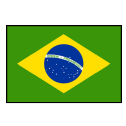
Brazil
Starting XI if the World Cup began today
Alisson; Fabinho, Marquinhos, Jemerson, Alex Sandro; Casemiro, Arthur, Philippe Coutinho; Vinicius Junior, Roberto Firmino, Neymar
The age of the starting XI at the 2018 World Cup suggests a significant change is likely for the Brazilian in four years’ time, especially in defence, where the end is coming for Dani Alves, Thiago Silva and Marcelo. In midfield, Arthur has what it takes to make himself a certain starter; up front, only Neymar has that title.

Next Gen
Neymar will be 30 by the time Qatar comes around and, while still vital, he may no longer be the most talented player because Vinicius Junior’s potential is gigantic. The striker has already demonstrated his ability in a short time at Real Madrid, having previously starred with Flamengo. This scenario makes Brazilian fans look forward to seeing him in action in Qatar.
Expectations
To be world champion. Coach Tite will be able to complete a full World Cup cycle and design a match planning from the start to the finish line. In addition, Brazil has a very good next generation. while every player in the potential starting XI has been playing at a high level in Europe.
Any issues?
The big question is about the defence and the change it faces when so many veterans move on. Marcelo is one of the best left-backs in the history, so his replacement probably will not be of the same level, especially from an attacking point of view. Fabinho, predominantly a midfielder at club level, appears likely to play at right-back. — Andre Tenreiro

England
Starting XI if the World Cup began today
Jordan Pickford; Trent Alexander-Arnold, John Stones, Joe Gomez, Ben Chilwell; Jordan Henderson, Harry Winks; Raheem Sterling, Dele Alli, Marcus Rashford; Harry Kane.
There are several changes from the regular line-up that reached the last four at the World Cup, especially in defence where only John Stones is certain to retain his place.
Next Gen
Jadon Sancho and Phil Foden will be 22 by the time the next World Cup comes around and both should be fighting for a place in the starting line-up. Sancho, having left Manchester City for Borussia Dortmund in 2017, is gaining the club and international experience that will make him challenge Raheem Sterling and Marcus Rashford.
But will Foden get the game time with City in the coming months and years to ensure the young midfielder’s development takes a natural course? Voted the best player at the 2017 Under-17 World Cup, he will be a crucial player for Gareth Southgate if he is given a chance at club level.
Expectations
Previous Football Association chairman Greg Dyke set a target of winning the World Cup in 2022, but that still seems an ambitious objective, even if England’s unexpected run to the semifinals at Russia 2018 has raised expectations and confidence.
England are improving and have a bright crop of talent emerging, but are they really going to be better than world champions France in four years’ time? That is difficult to envisage. A realistic goal would be matching this summer’s heroics and reaching the last four.
Any issues?
England still struggle to retain and command possession against the traditional heavyweight nations; the likes of Spain and Croatia have exposed that deficiency in recent months. If Foden, Winks and others make the necessary progress, though, they could make England more competitive.
Meanwhile, there is an over-reliance on Harry Kane for goals. Over the next four years, the likes of Rashford, Sterling, Alli and Sancho need to ease that burden. — Mark Ogden
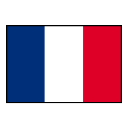
France
Starting XI if the World Cup began today
Alphonse Areola; Benjamin Pavard, Raphael Varane, Samuel Umtiti, Benjamin Mendy; Ousmane Dembele, N’Golo Kante, Paul Pogba, Anthony Martial; Antoine Griezmann, Kylian Mbappe
Ten of that line-up were part of the squad that won the 2018 World Cup in Russia and most will be at their peak — Griezmann will be the oldest at 31, while Mbappe will only be 23 — having played together for many years.

Next Gen
France have incredible young talent. In addition to the likes of Houssem Aouar, Tanguy Ndombele, Abdou Diallo, Sofiane Diop, Mickael Cuisance and Claudio Gomes, two players have to be followed closely.
Matteo Guendouzi, the Arsenal midfielder, has been excellent in the last two seasons and Real Madrid’s Theo Zidane dreams of following in his father’s footsteps to win the World Cup.
Expectations
The last country to retain their crown was Brazil in 1962 so France face a huge task. Nevertheless, they are among the favourites and everyone in and around the team, including the fans, expect Les Bleus to go all the way once again.
Any issues?
This is a squad that has everything: youth, experience, maturity, skills, physicality, depth, intelligence, team spirit and the knowledge of what it takes to win a World Cup. The biggest threat, then, is complacency; France must avoid arrogance and taking anything for granted. — Julien Laurens
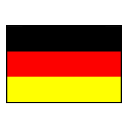
Germany
Starting XI if the World Cup began today
Manuel Neuer; Thilo Kehrer, Mats Hummels, Niklas Sule, Antonio Rudiger; Joshua Kimmich, Toni Kroos, Leon Goretzka; Timo Werner, Serge Gnabry, Leroy Sane
Sane missed Russia but has since been brought back into the fold, while Mesut Ozil has opted out of international football. Gnabry has also staked a claim as Germany look to forget a pretty dreadful 2018.
Next Gen
Kai Havertz, 19, should be the outstanding player by the time Qatar comes along. The tall, elegant midfielder combines technique with an eye for the killer touch, can play anywhere in midfield and is adept at finding space between the lines against deep opposition. He will have moved from Leverkusen to one of Europe’s elite clubs by 2022, which will turbo-charge his development.
Up front, 20-year-old Johannes Eggestein can be the answer to Germany’s centre-forward problem, with Cedric Teuchert another one to watch.
Expectations
Depending on Germany’s performance at Euro 2020, expectations will either be sky high, with nothing but a win seen as good enough, or for a semifinal place. It does not get any lower than that, the poor showing in Russia 2018 notwithstanding.
There’s also a good chance that Joachim Low will still be in charge for his fourth World Cup, although by 2022 there should at least be available alternatives to put more pressure on him.
Any issues?
Germany’s problem positions remain full-back and centre-forward. It is hoped that Eggestein and / or Teuchert will grow into-fully fledged internationals, but another solution might present itself if either Werner, Sane or Gnabry adapt their game to become regular scorers through the middle.
Low — or his successor — might have to continue to rely on collective striking power as opposed to an individual. As far as the full-backs, a successful conversion of midfielders, a la Kimmich, is the most promising way to deal with a shortage that will not abate. — Raf Honigstein
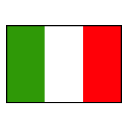
Italy
Starting XI if the World Cup began today
Gianluigi Donnarumma; Lorenzo Pellegrini, Alessio Romagnoli, Mattia Caldara, Andrea Conti; Marco Verratti, Jorginho, Nicolo Barella; Lorenzo Insigne, Pietro Pellegri, Federico Chiesa
Italy play 4-3-3 under Roberto Mancini, which reflects an abundance of wingers and a shift away from the 3-5-2 that Antonio Conte used at Euro 2016. A generational transition with Qatar in mind has already begun and it is reasonable to expect the team to have continuity everywhere except centre-back.

Next Gen
Left-back Luca Pellegrini should be in bloom by 2022 and prospects for midfield also look good; Mancini has called Barella “phenomenal for his age,” then there is Andrea Pirlo-lookalike Sandro Tonali, the giant Nicolo Zaniolo and 17-year-old Nicolo Fagioli, who has been lauded by Juventus manager Massimiliano Allegri.
The precociousness of teenagers Pellegri and Moise Kean bodes well for the centre-forward position although, incredibly, Qatar 2022 might still come too soon for them.
Expectations
Though humbled by not qualifying for Russia, a four-time winner like Italy still expects. Mancini told GQ: “Right now I’m thinking about qualifying for the Euros and having a great tournament, but I have to confess that the idea of the World Cup is already whirling around in my mind.”
Any issues?
Scoring goals: The Azzurri found the net nine times in 11 games in 2018 and the current batch of strikers are not taking the chances being created. In short, Italy needs another Gigi Riva, a Christian Vieri regen, the second coming of Paolo Rossi, a Luca in the Toni or Vialli mould or a new Pippo Inzaghi. — James Horncastle

Mexico
Starting XI if the World Cup began today
Guillermo Ochoa; Carlos Salcedo, Edson Alvarez, Nestor Araujo, Jesus Angulo; Hector Herrera, Erick Gutierrez, Victor Guzman; Diego Lainez, Hirving Lozano, Raul Jimenez
The over-riding issue is which players in their prime at Russia 2018 have another World Cup in them. The likes of Javier Hernandez, Hector Moreno, Andres Guardado, Carlos Vela and Miguel Layun have all been regulars and would bring vital experience, but renovation is needed between now and Qatar.
Next Gen
Lozano should be at one of Europe’s top clubs by 2022; his pace, directness and goalscoring mean he is up there with Herrera as Mexico’s most important player. The great hope is 18-year-old Lainez, a special and exciting talent who will need nurturing. Another name to look for is Cruz Azul forward Roberto Alvarado, who will push if Lainez does not live up to the hype.
Expectations
The same as every World Cup: Assuming a 32-team tournament, Mexico will again aim for that “fifth game.” Brazil is the only other team to get out of every group stage since World Cup ’94, but unlike Brazil, El Tri hasn’t been able to win a single knockout game. Meanwhile, though 2022 is clearly important, Mexico are co-hosts four years later; the federation is looking for an eight-year project to succeed.
Any issues?
Much will depend on the players’ fortunes at club level. Too many younger talents have stagnated within Liga MX; the likes of Guzman, Alvarez, Angulo and Lainez should compete in stronger leagues, while those already in Europe must strive for as high a level as possible.
The Russia 2018 generation — led by Hernandez, Moreno and Guardado — has been battered in the media ever since the summer, but was historic in terms of those playing outside Mexico. The stars of tomorrow have plenty to live up to. — Tom Marshall

Portugal
Starting XI if the World Cup began today
Rui Patricio; Joao Cancelo, Pepe, Ruben Dias, Raphael Guerreiro; Ruben Neves, William Carvalho, Joao Mario; Bernardo Silva, Cristiano Ronaldo, Andre Silva
Ronaldo will be 37 by November 2022, but shows no signs of walking away from international football. The Patricio-Cancelo-Bernardo-Ronaldo spine will be key to Portuguese hopes.

Next Gen
Bernardo Silva has long been touted as the biggest talent to come out of Portugal since Ronaldo. He is justifying those expectations with wondrous form for Manchester City and is also starting to shine for the national team, though he needs to be more consistent.
Another Premier League-based player, Ruben Neves, has seamlessly made the step up to his national team’s starting XI since the summer. Attributes such as unperturbable calmness, perfect positioning and pinpoint passing are likely to keep him there for the next decade.
Expectations
With a sprinkling of world-class talent in their respective positions throughout the team and a strong supporting cast, equalling or bettering their best-ever finish of third at the 1966 World Cup is realistic. Out of the 12 teams in the elite League A groups of the UEFA Nations League, Portugal were the only side to remain unbeaten, showing they are in a good place.
Any issues?
The heart of the defence is still reliant on Pepe and there are few alternatives for the former Real Madrid man, who will soon turn 36. Despite Bernardo producing some brilliant Nations League performances, he was below his best away to Italy; can Fernando Santos get the best out of Portugal’s new golden boy? — Tom Kundert

Spain
Starting XI if the World Cup began today
David De Gea; Dani Carvajal, Sergio Ramos, Inigo Martinez, Jordi Alba; Thiago Alcantara, Sergio Busquets, Saul Niguez; Isco, Iago Aspas, Marco Asensio
Saul did not a play a minute in Russia but has had more chances under Luis Enrique. Rodri will push Busquets hard for a starting spot in the near future.
Next Gen
The Atletico pair of Rodrigo and Saul look set to lead the next generation. Beyond them, Asensio is expected to step up although his ascent is taking longer than anticipated. His talent is not questioned; his temperament is starting to be. It is probably too soon to expect a significant impact from any of those coming through the Under-21s, especially given that the senior squad is already fairly young.
Expectations
This is not a golden generation and there are some doubts — the line-up for a recent friendly vs. Bosnia-Herzegovina was underwhelming — but there is a lot of talent at Luis Enrique’s disposal. As such, if Spain were to get things right and if there are not key injuries, there is no reason to rule them out as potential winners. Sometimes nostalgia does not allow people to see how good the current squad could be.
Any issues?
The retirement of Gerard Pique has exposed the paucity of options at centre-back, while the debate around the goalkeeper position is hugely exaggerated but does exist. Up front, the creative options are good but Spain do seem to have difficulty finding a striker that properly fits the model. This issue has been deepened by Alvaro Morata’s apparent loss of form and confidence. For the first time there is a significant debate about style and identity; that creates an uncertainty which doesn’t help. — Sid Lowe

United States
Starting XI if the World Cup began today
Brad Guzan; DeAndre Yedlin, Geoff Cameron, John Brooks, Jorge Villafana; Weston McKennie, Tyler Adams, Fabian Johnson; Christian Pulisic; Jozy Altidore, Bobby Wood
The key words here are, “if the World Cup started today,” which explains why some veterans remain and some youngsters are not included. Cameron would be the best bet for right now, although his international career appears to be over in actuality; while midfield is more muddled and there are few options up front.

Next Gen
Although he is established as a key player, Pulisic remains the biggest up-and-coming talent. Beyond him are McKennie, who has shown box-to-box qualities, and Adams, whose strengths lie more on the defensive side. Tim Weah has flashed in the attacking half, but might have to leave Paris Saint-Germain to find minutes.
Striker Josh Sargent has made encouraging progress with Werder Bremen. At the back, Matt Miazga and Cameron Carter-Vickers comprise the next generation of center-backs, followed by Aaron Long and Tim Parker. At outside-back, Antonee Robinson and Shaq Moore are players to watch.
Expectations
The Americans first need to qualify and, given what transpired last cycle, nothing can be taken for granted. If they do, the aim would be, as in the past, to get out of the group stage and hope for a fortuitous draw that might allow for a deep run.
The U.S. has reached the knockout rounds three of the last four times it has qualified, so the temptation is to aim a little higher. But the program is at a low ebb so, for that reason, getting out of the group might be ambitious.
Any issues?
Until a permanent manager is appointed — Gregg Berhalter is tipped for the role — the program remains in limbo. On the field, the single biggest problem is a lack of creativity beyond Pulisic. Sebastian Lletget has shown he can be a crafty performer, but injury has slowed his international progress. Kenny Saief is similarly talented, but has defensive shortcomings.
Weah, Jonathan Amon, Emmanuel Sabbi and Romain Gall all could evolve into attacking forces, especially given their ability to run at defenders. But all three are still at the embryonic stage of their careers and have much to prove before they can be counted on. It would help if the respective games of McKennie and Adams evolve to the point where they can chip in. — Jeff Carlisle
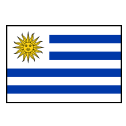
Uruguay
Starting XI if the World Cup began today
Martin Campana; Mathias Suarez, Bruno Mendez, Jose María Gimenez, Diego Laxalt; Lucas Torreira, Matias Vecino, Federico Valverde, Rodrigo Bentancur; Edinson Cavani, Luis Suarez
Oscar Tabarez, who will have been in charge for a remarkable 16 years by Qatar 2022, has shown the skills to manage a group of top-class players and to change when needed. How he handles thirtysomethings Suarez, Cavani and Diego Godin will be critical.
Next Gen
Real Madrid’s Federico Valverde is a typical modern-game midfielder; he has tactical intelligence to play centrally and the physical resources to operate wide, with the bonus of an accurate mid-range shot. He missed the cut for Russia — Tabarez thought it would be too early for the 20-year-old — but has since become a key part in the starting XI.
Expectations
Uruguay have had good results with their youth teams lately and that raises the bar for Tabarez and his coaching staff, who must find the way to give more minutes to new talent and, at the same time, become less reliant on veteran stars like Suarez, Cavani and Godin. If that transition can be achieved, a semifinal spot is possible in 2022.
Any issues?
Results since Russia have not been good, with four consecutive defeats, but it is also true that La Celeste only lost by a single goal to the likes of Brazil and France. Uruguay has struggled in the past to combine youth and experience, but Tabarez has four years to work on it. – Damian Didonato
